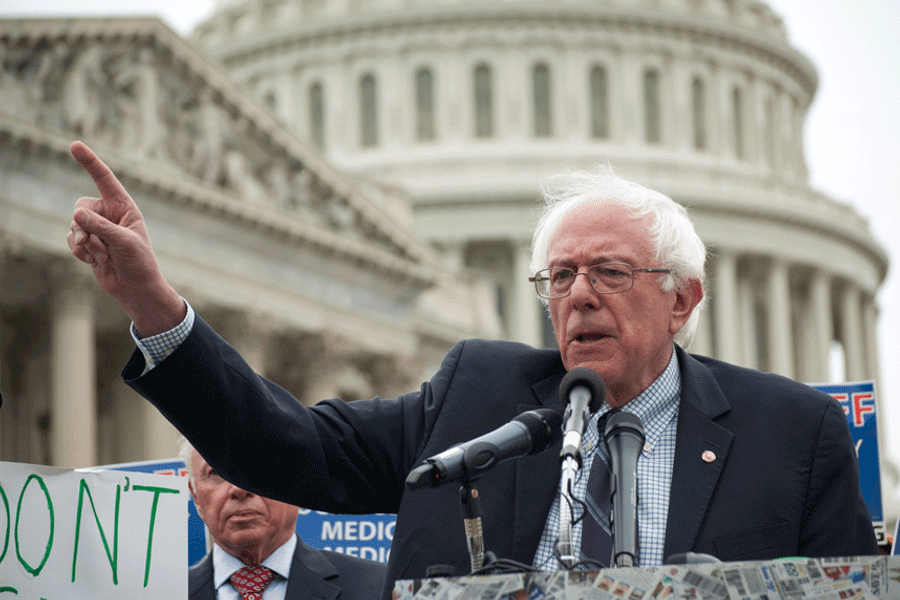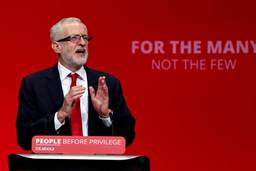Run, Bernie, Run—But As What?
Dems, Greens, independents and socialists are courting Vermont’s junior senator.
Cole Stangler

Vermont’s independent senator Bernie Sanders recently headed to Goose Lake, Iowa — the latest chapter in his ongoing flirtation with the 2016 presidential race. On Saturday, May 17, he delivered the keynote speech at the Clinton County Democrats “Hall of Fame” Dinner.
“The agenda I believe in is a very progressive agenda,” he told the crowd of 200. “And I want to get a sense from Iowa and the rest of the country if there is support for that agenda.”
Other than his age — by Election Day 2016, Sanders will be 75 years old — the greatest question facing any such presidential bid is what party label, if any, the senator adopts. The dilemma: The self-described socialist prides himself on his independence, but worries he may not be able to attract enough attention unless he runs as a Democrat.
As Sanders ponders his next steps, his supporters are starting to make noise.
Leading the pack is Progressive Democrats of America (PDA), which is pushing Sanders to make the leap into the Democratic primary. On May 9, as part of its 10th anniversary celebration in Northampton, Massachusetts, PDA presented the senator with more than 11,000 signatures asking that he run as a Democrat. The following morning, Sanders delivered a speech to about 250 progressive activists at a Northampton church. (Full disclosure: I spoke on a panel about progressive media at PDA’s event.)
“We believe in promoting progressives first. And the fact is that Bernie Sanders is far and away number one out there when it comes to progressive issues,” says Conor Boylan, PDA’s national deputy director. “Just given how the primaries are set up, he would have more of a voice and be able to get his message out a lot better if he were to run as a Democrat — given the fact that independent candidates are not sought after by the media during the presidential race.”
“And … if Hillary Clinton does run in the primaries, I think that’s definitely where you’re going to see the two visions for America — the more corporate, neoliberal Hillary Clinton and the more populist, fighting-for-the-middle-class Bernie Sanders,” Boylan continues. “That’s why having the two of them debate each other would be worth its weight in gold for progressive Democrats who really want to say, ‘Hey, not all Democrats are the same here.’ That would be a real example.”
Others say that for Sanders to run in the Democratic primaries would be an exercise in futility — a perspective that flows from a much grimmer outlook on the Democratic Party as a whole. Since last December, Michael Trudeau, an editor and Green Party activist based in Cary, North Carolina, has led a petition drive calling on Sanders to run as a Green. The petition has amassed just under 1,000 signatures so far.
“Over 80 percent of Democrats want Hillary Clinton to be president,” says Trudeau, referencing recent polling data. “I think that says volumes about the character of the Democratic Party. I don’t think someone like Bernie Sanders will have rank-and-file Democratic support, let alone super-delegate support in the Democratic primary.”
Moreover, Trudeau says, the track record of insurgent Democratic presidential campaigns is unimpressive. Bids like Jesse Jackson’s in 1988 or Dennis Kucinich’s in 2004 and 2008 have failed to halt the party’s rightward shift, he says.
“The exercise of him running as a Democrat, in my mind, would really just be an exercise in bringing in progressives, liberals, people left of the Democratic Party into the Democratic Party, because he’s there,” Trudeau continues. “And then all these people end up voting for Clinton, neoliberalism, Wall Street, corporatism, everything that she stands for. … He talks about this political revolution — it’s not going to happen with the Democratic Party. It’s going to be shut down.”
Michael Lighty, PDA board member and director of public policy of National Nurses United, who says he’d like to see a presidential candidate from the Left in 2016, says it’s wrong to equate a primary run with any compromise in beliefs.
“[Sanders] caucuses with the Democrats in the Senate,” Lighty says. “That means he votes for Harry Reid as Majority Leader. Has he sacrificed his politics in doing so? No. There’s no difference tactically from running as a Democrat in the primary than from caucusing with the Democrats and supporting the Democratic Majority Leader. It doesn’t have strategic or ideological implications per se.”
The true legacy of Sanders’ campaign — that is, if it is to serve as more than a mere stumbling block to Hillary Clinton’s coronation — depends on how much traction it generates among grassroots activists, according to Lighty. “Candidate campaigns have to be about the candidate,” he says. “It’s the job of activists to make it about a broader movement toward participatory democracy and progressive politics.”
Many progressives say Jackson’s 1988 campaign, where the “Rainbow Coalition” arguably reached its peak, missed an excellent opportunity to do just that.
“We want [the Democrats] to become a party for the interests of working people and not be a corporate party,” Lighty continues. “A Bernie Sanders campaign is part of that struggle within the Democratic Party. But it only moves the party as a whole to the left if there is an organized group that makes that a primary mission in addition to supporting Bernie [in the primary].”
Build a third party?
Socialist Alternative, the party of Seattle City Councilmember Kshama Sawant, says Sanders should use his clout to build momentum outside of the Democratic Party.
“There has not been a more propitious time in modern American history to begin to build a pro-working class political force,” Socialist Alternative’s Tom Crean declared in a recent editorial. “We are not, of course, pretending that a mass party of the 99% could be built overnight, but if Sanders decided to run as an independent left candidate for president to help galvanize the launch of such a party, it would be an enormous step forward.”
Crean suggests that Sanders’ run “could be linked to a national effort to stand a slate of credible left candidates in local and national races in 2016 on an independent basis.”
On the other hand, Ralph Nader, the four-time presidential candidate who has run twice with the Greens and twice as an independent, says Sanders should run as a Democrat.
“I think he’s history if he goes independent. He’ll go nowhere,” Nader says. “So he’s got to go Democrat.”
I asked Nader if that means Sanders’ biting critique of politics-as-usual would lose any of its edge.
“That depends if he runs as a Democrat against the Democratic corporate establishment,” Nader says. “If he runs against [that], then no, he can continue to be free to say what he wants. But if he tries to play politics inside the party and not mention the raw edges of the party, and the militarism and sucking up to Wall Street, then he won’t be the same Bernie Sanders, obviously.”
Judging by the support he’s received and the events he’s spoken at so far, Sanders would appear to be leaning toward a primary run with the Dems.
Then again, it’s unclear if he’ll even run at all. Sanders’ ongoing stump-speech tour across the country need not culminate in a presidential bid. On one such trip to the South last fall, Sanders told In These Times he wants to identify progressive candidates on the national, state and local level who could use support from his independent political action committee. That could very well be his end game.
I asked PDA’s Conor Boylan if he’s received any indication yet which way Sanders is leaning.
“They’re definitely keeping their cards close to the chest,” Boylan says. “No real indication either way, if he’ll run or what he’ll run as. But that’s our job to make that happen for him.”








